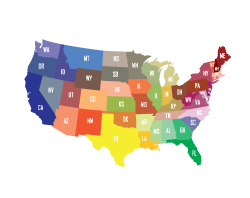Expungement of criminal convictions is available for both felony or misdemeanor convictions. However, the type of relief available varies, depending upon both the criminal charges and the sentence received.
Misdemeanor convictions are expunged pursuant to Penal Code Section 1203.4. In any misdemeanor case, where probation is granted and successfully completed, and where the probationer is not currently facing charges, an expungement is available. For a detailed discussion of expungement in misdemeanor cases, click here.
Felony Case
If probation is granted in a felony case, Penal Code Section 1203.4 will control, just as it does in a misdemeanor case.
A grant of probation can still involve jail time, and, in the case of a felony conviction, often does. A judge has the discretion to order formal or informal (also called “summary”) probation, and impose various terms and conditions, including up to one year in county jail.
When the term of probation has expired naturally or been terminated early after a motion by the defense, and if other requirements are met, 1203.4 relief is available.
California Penal Code Section 1203.4 provides, in pertinent part, that:
In any case in which a defendant has fulfilled the conditions of probation for the entire period of probation, or has been discharged prior to the termination of the period of probation, or in any other case in which a court, in its discretion and the interests of justice, determines that a defendant should be granted the relief available under this section, the defendant shall, at any time after the termination of the period of probation, if he or she is not then serving a sentence for any new offense, on probation for any offense, or charged with the commission of any offense, be permitted by the court to withdraw his or her plea of guilty or plea of nolo contendere and enter a plea of not guilty; or, if he or she has been convicted after a plea of not guilty, the court shall set aside the verdict of guilty; and, in either case, the court shall thereupon dismiss the accusations or information against the defendant and except as noted below, he or she shall thereafter be released from all penalties and disabilities resulting from the offense of which he or she has been convicted.
The order shall state, and the probationer shall be informed, that the order does not relieve him or her of the obligation to disclose the conviction in response to any direct question contained in any questionnaire or application for public office, for licensure by any state or local agency, or for contracting with the California State Lottery.
Once the guilty plea or verdict has been set aside, and a judgment of not guilty entered, a judgment of not guilty is entered, and the complaint of information is dismissed.
Felony Convictions with State Prison Sentences
Felony convictions, where probation is not granted, and a term in state prison is imposed, present an entirely different situation. In those cases, the only relief available is a Certificate of Rehabilitation and Pardon or Direct Application for Governor’s Pardon. For a thorough discussion of the difference between the Certificate of Rehabilitation and the Direct Application for Governor’s Pardon, CLICK HERE.
Reducing “Wobbler” Offenses
Criminal cases fall into three categories: felonies (cases where punishment can include more than one year in state prison), misdemeanors (where punishment can include up to one year in county jail), or “wobblers” (cases that can be punished either by state prison or up to one year in county jail).
For purposes of expungement proceedings, if a felony conviction is a “wobbler”, a skilled criminal lawyer will likely seek a reduction of the offense to a misdemeanor pursuant to Penal Code Section 17(b) before seeking an expungement under Penal Code 1203.4.
Penal Code Section 17(b) states that, on the grant of this relief, the crime is a misdemeanor “for all purposes,” but case law and other statutes carve out many exceptions. The conviction, for example, remains a prior strike under California’s “Three Strikes” law, because it was not a misdemeanor reduction at the time of the original sentencing. The person may still be considered convicted of a felony for purposes of many gun laws.
It is far better for a defendant to seek reduction from a felony to a misdemeanor, where available, before seeking an expungement. It is certainly better for a defendant to have a dismissed misdemeanor on their record than a dismissed felony. Note: where a crime can only be punished by a term in state prison, this reduction is not available.







